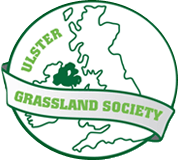Event Details
- Date: 15 Jul 2012
- Venue: Sam Chesney's Farm, Kircubbin
Sam Chesney runs a 150 Limousin suckler cow herd, bred to Limousin and Belgian Blue bulls, on 77ha (190 acres) on the Ards Peninsula. Sam Chesney’s main goal is to maximise production efficiency to make as much profit as possible.
For example, every cow and heifer must be as productive as possible. So heifers successfully calve down at 24 months of age and calving takes place in a tight 12-week block in spring. The calving index for second calvers is 338 days, and for the older cows 353.
Non-performers are rigorously culled and Aberdeen Angus bulls are being introduced to reduce cow size. This means they will eat less and be more efficient, while releasing land for more cows.
The heifers are served by AI with bulls chosen strictly on their Estimated Breeding Values (EBVs) for important commercial traits such as calving ease, calf growth rates and carcase quality.
High clover swards and rotational paddock grazing behind mains electric fences produce high quality swards for grazing from mid-February to mid-October. This has allowed Sam Chesney to slash his fertiliser and meal bills, while producing an output of 860kg liveweight/ha (350kg/acre), nearly double the national average.
Grassland improvements?
With such impressive performance can Mr Chesney improve further? Charlie Morgan believes so, after walking the farm and digging a few holes in the grazing paddocks.
A high stocking rate of 3.03 Livestock Units/ha (1.2 LU/acre) has left many areas poached after the wettest summer known. But Mr Morgan was more concerned about what was going on below ground.
“High animal production off grass starts with the soil,” he said. “You can buy the best seeds mixture in the world, but if the soil isn’t right it won’t produce. Not growing the dry matter in the field means more has to be bought in at much greater cost. Grass silage costs £100/t DM, grazed grass just £60/t DM, against £267/t DM for meal.”
Compaction
In one field Mr Morgan found signs of significant compaction between 10-15cm (4-6 inches). The soil was tight and hard with no vertical cracks and very few worms. “Worms are the most important animal on the farm,” said Mr Morgan. “There should be to 2.5 tonnes of animal life/acre (6t/ha) in the soil, of which 75% should be worms.
“They are vital for aeration, providing an open structure with channels for water to run down and roots to follow. They also drag organic matter – natural fertiliser, down from the surface. Sam’s reseeded leys have the potential of producing at least 10tDM/ha (4t/acre), but with compaction like this – affecting fertiliser efficiency and encouraging weeds, output could be halved in not many years.”
Mr Morgan suggested that the fields would benefit greatly from subsoiling when ground conditions are right.
“Compaction happens – you are not a bad farmer if you have compacted soils. But it needs sorting,” said Mr Morgan. “The cost of not sorting it is the cost of buying more meal.”
Mr Morgan admitted that Sam is already doing a lot of things right, such as paddock grazing, regular reseeding, strategic use of fertiliser and good weed control using translocated products to produce the high liveweight/ha. But if he grew and fed more grazed grass, could he do 1,000kg/ha he wondered – although care would be needed not to ‘overcook’ the system.
Choose carefully
Talking about grass varieties and seed mixtures, Mr Morgan advised regular reseeding – every five to six years is cost effective, and using the Recommended List to help decide which grasses to buy.
“Grass breeders have increased grass yields by 1-2% each year – so if you haven’t reseeded in the past ten years your swards are 20 years behind on yield where they could be, if still in good condition,” he explained.
For grazing pastures he suggested mixtures of intermediate and late heading diploid perennial ryegrasses with D values in the low 70’s. A small amount of Timothy is good for early spring growth.
He advised Mr Chesney against trying to add too much white clover beyond about 30% content. While it is good for fixing nitrogen and cow fertility, it yields much less than perennial ryegrass and has far lower fibre content – which is crucial for maintaining good rumen health and optimising stock growth.
Mr Chesney thanked Charlie for challenging him on some of his grassland management and for opening his eyes on a few key aspects. He said he knew compaction was a problem in some fields, but will definitely get on and do something about it now!








